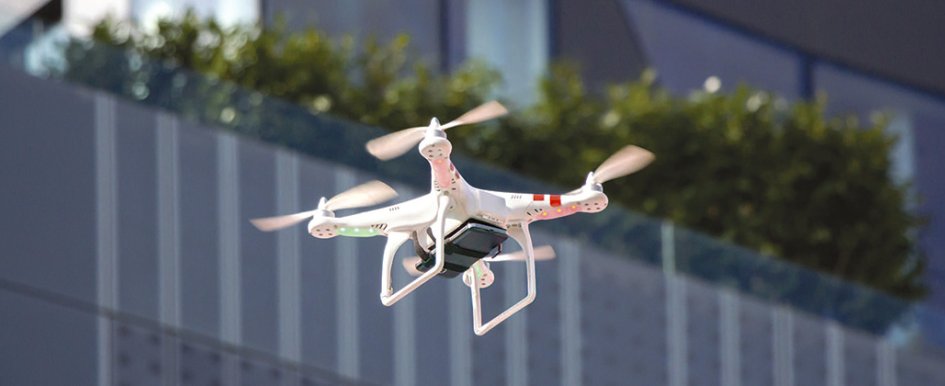
Recent Wall Street Journal article cited that Komatsu Ltd. is dealing with a shortage of construction workers. A shortage of workers means no customers to purchase Komatsu's materials, which is an enormous problem for a nation that needs to grow upward to expand. However, Komatsu has a plan: let drones do some of the work. This plan is also currently being executed by a number of construction companies in the U.S.
Unmanned Aerial Vehicles (UAVs), or drones, have often been used to improve public safety, support cultivation, aid the environment, monitor the climate and mitigate disasters. The next generation of drone equipment has the capability to integrate audio and text with a real-time video feed and overlay existing images to identify property wear and damage. Drones can also be equipped with infrared cameras, which can identify water and air leaks in a building.
There is a wide variety of applications for drones in the construction industry. They have been used to survey large areas, scale bridges and buildings taking high resolution images to assess the condition and even make basic repairs. Komatsu is using its drones to cut down on the time it takes to survey a foundation.
The Federal Aviation Administration (FAA) forecasts the number of drones could reach 7,500, and other reports estimate the number could be 20,000 by 2020.
Risks and Effects in Construction
The growing applications for drones are not without concern. While economical, drones pose many risks that can put construction companies on the hook for litigation. At the Risk and Insurance Management Society conference in April, more than two-thirds of risk managers put invasion of privacy at the top of their worry list when using drones. Just over 10 percent of risk managers believed personal injury was their biggest concern and 9 percent cited property damage.
Privacy concern is a complicated issue. The images taken by a drone may violate an individual's privacy, which could result in liability litigation. Careful consideration must be taken to understand what images will be taken, how they will be stored, for how long and who will have access to that information.
Americans are taking the drone cyber threat seriously, too. A recent Reuters/Ipsos poll cited that 71 percent of respondents thought that drones should not be allowed to operate over someone else's home. Even the president weighed in by ordering the FAA to make sure drones are not dangerous and do not violate people's privacy.
Regulations and Effects on the Industry
Previously, it was illegal to fly drones for commercial purposes unless the operator had a specific exemption from the FAA for testing or government use. On February 15, the FAA took a big step toward legalizing commercial drone flights by enacting new rules that, if adopted, would allow any company to fly, as long as they abide by specific guidelines.
The most significant of these rules are that all operators need to be licensed and over 17 years old. To obtain a license, operators must pass a test at a FAA facility, obtain a certificate and renew that test every two years. Drones cannot fly above 500 feet and can only weigh as much as 50 pounds. Drones must be flown during the day and the operator has to maintain a line of sight with the drone.
In addition to the above mentioned regulations, there are a few other ways construction companies can mitigate the risks associated with drones, listed below.
- Ensure the operator understands and complies with FAA rules.
- If using a third party, ensure there is a contract that indemnifies the company from losses that occur as a result of drone operations.
- Institute confidential information policies and procedures.
- Restrict access to any images taken by the drone.
- Restrict fly zones to avoid privacy violations.
- Work with your insurance broker to understand where you may or may not be covered in terms of personal liability, personal injury, property damage and invasion of privacy.
- Weigh the potential savings of using a drone and/or a third party operator versus your liability.
- Ensure that your insurance broker and carrier are aware of the intended use, takeoff and landing location, flying altitude and whether it will be operated over a populated area.
- Implement some sort of financial backstop from losses by either purchasing insurance or requiring the operator to have appropriate insurance coverage.
Companies looking to use drones should begin by addressing the key risks, understanding FAA regulations and executing best practices so this technology remains practical and cost effective. With proper insurance coverage, knowledge and due diligence, business owners have the tools to use drones effectively and safely.

